Variety of varieties of basil: description and characteristics of varieties
Basil varies in types, varieties, taste, smell and composition. Depending on the variety, the plant is used as a spice for meat, fish, desserts, and added to drinks or medicinal preparations. Basil, considered sacred in ancient times, has tonic and restorative properties; lemon complements the taste of homemade lemonade, and fragrant is widely used in cooking.
Varieties of Basil
The genus Basil has 69 species. Plants differ in the aroma, taste, chemical composition, color and shape of the leaves.
The photo shows basil seeds.
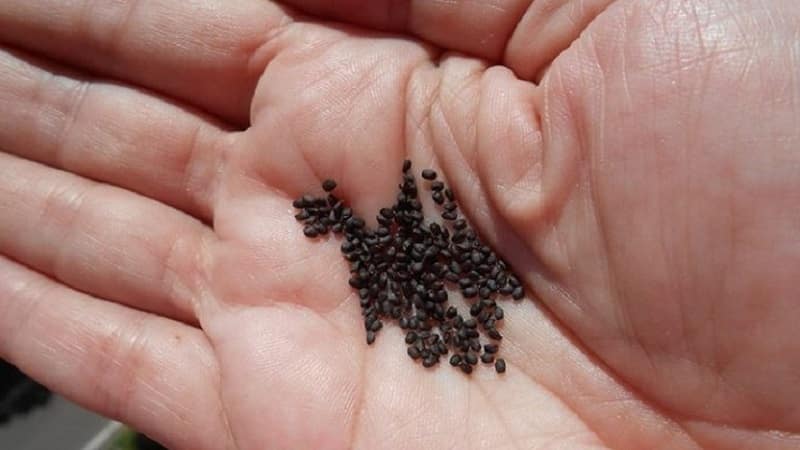
By aroma
If you rub different leaves and smell them, it is easy to determine that they are different from each other.
On a note! For meat, plants with the scent of pepper, cloves or lemon are used, for fish and vegetables - anise, for sweet pastries and desserts - caramel and vanilla.
Clove
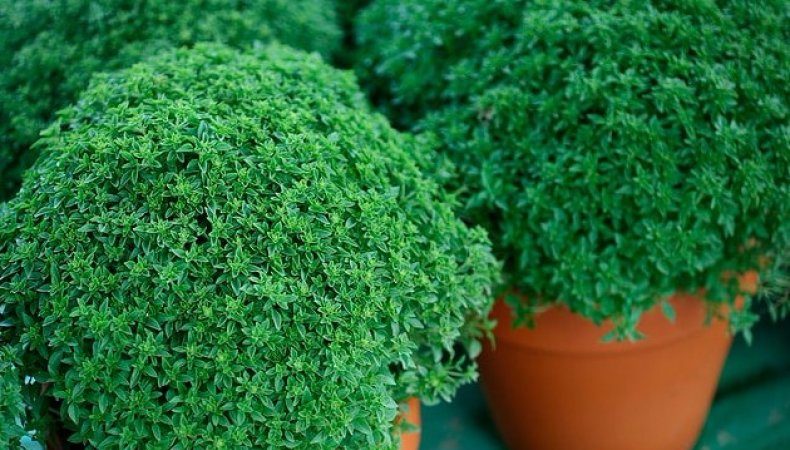
Plants with a spicy clove scent are used in marinades, sauces, and winter preparations.
Examples of varieties:
- Red Ruby is a mid-early crop with large purple leaves. Suitable for sauces and fresh preservation.
- Stella is a mid-early variety with a strong clove scent. The leaves are elongated, dark green.
- Clove scent produces a distinct clove scent. Compact bush up to 60 cm high grow all year round in pots in the kitchen.
- Crimean. Basil has a rich clove aroma with subtle notes of pepper. The vegetative period of the plant is up to 65 days.The leaves are purple with a carmine tint and have small serrations on the edges.
Peppery
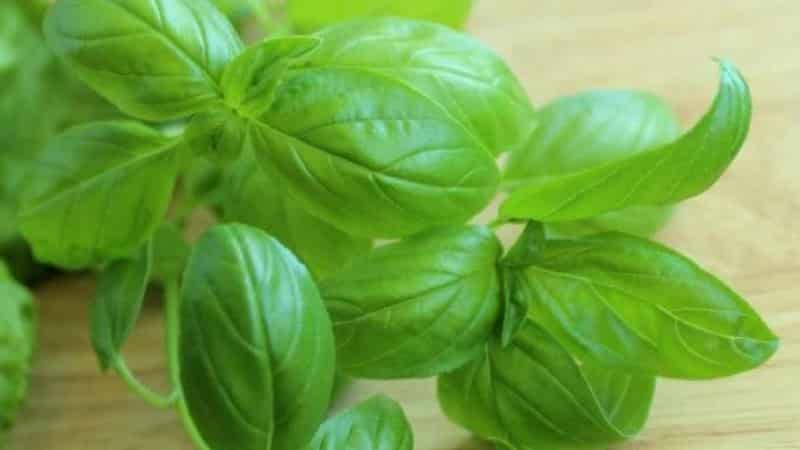
This fragrant culture is added to vegetable, meat, fish and other dishes, except for sweet desserts and tonic drinks.
Among the varieties stand out:
- Fantasy is a mid-late plant of a bright green hue. Reaches 70 cm in height.
- Basilisk is a compact bush up to 20–25 cm high, densely covered with small green leaves. The culture is early ripening.
- Rox - has large dark purple leaves. The vegetative period is 30–35 days.
- Yerevan - early ripening, has a peppery aroma with notes of tea. The leaves are small with a blue-violet tint. Suitable for fish, meat dishes, sauces.
Citric
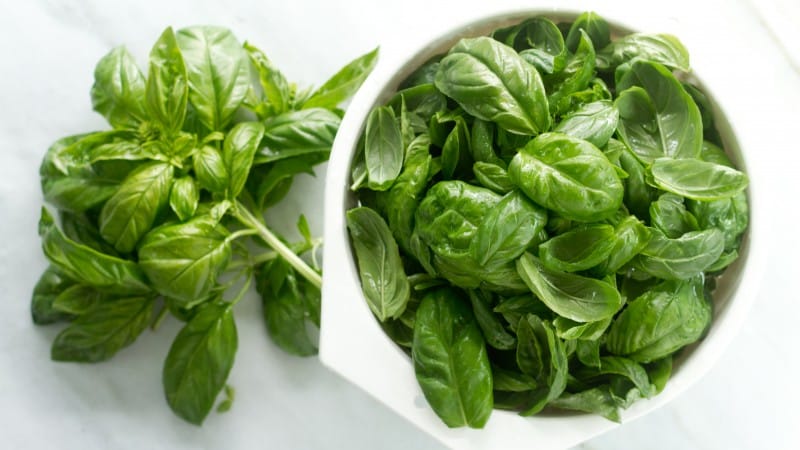
Cooks use the rich lemony smell of the plant to prepare cooling drinks in the summer, delicious desserts and baked goods.
Popular varieties:
- Lemon scent is a semi-spreading bush with a bright, pronounced lemon scent that is difficult to confuse with others. Light greens are suitable for decorating cakes, desserts, and jellies.
- Persian has small, light green leaves. Pale pink flowers are collected in a small bunch. The variety was obtained as a result of crossing lemon and Thai basil.
Caramel
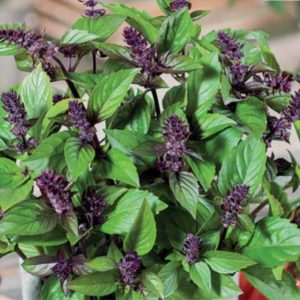
If, when you rub the plant in your palm, you feel a pleasant candy smell, this basil is classified as caramel:
- Lyubimchik is a mid-season variety with high yield. The leaves are small, light green. Add basil to vegetable salads and desserts.
- Red Ruby is an early ripening compact plant. Used as a herb for salads and a spice in cooking.
Marinade
Cooks mainly use varieties with a marinade aroma for preparing canned vegetables.Such plants do not lose their aroma for a long time and respond well to heat treatment.
Representatives with the most intense odor:
- Tempter. The spreading bush has large green leaves with a characteristic persistent pickle aroma. The plant is sharp and rich, so it is used sparingly.
- Shalun is ideal for preparing delicious marinades and canning. It grows into a spherical dense bush of rich green color.
Anisic
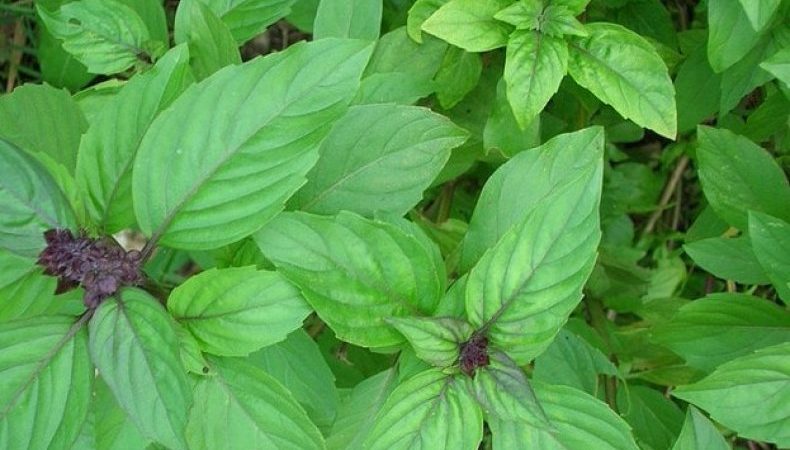
Varieties with anise aroma highlight and make food more refined. Greens are used for first and second courses, desserts, and appetizers.
Popular plants:
- Basil Aniskin has a strong anise aroma. Used for fresh salads and canning for the winter. The leaves are ovate, color from dark green to dark purple. The bush is erect, up to 50 cm in height.
- Italian (Genoa) - a low bush (up to 30 cm) grows up to 60 cm in width. The leaves are small, light green with a strong anise smell.
The Italian variety is known as the main ingredient in the famous pesto sauce.
Peppermint
Basil with a mint-pepper aroma is an excellent dry spice for preparing tomato sauces and meat marinades. Fresh greens are placed in vegetable dietary salads.
Interesting! Common basil, or garden basil, originated in Africa. It was brought to Europe by the soldiers of Alexander the Great. In Russia, the plant has been used primarily for medicinal purposes since the 18th century.
Greek is the most famous variety with a minty-pepper scent. Small bushes up to 20 cm high can be grown in small pots at home on the windowsill. The plant is added to meat marinades, fresh green salads, and hot sauces.
Menthol
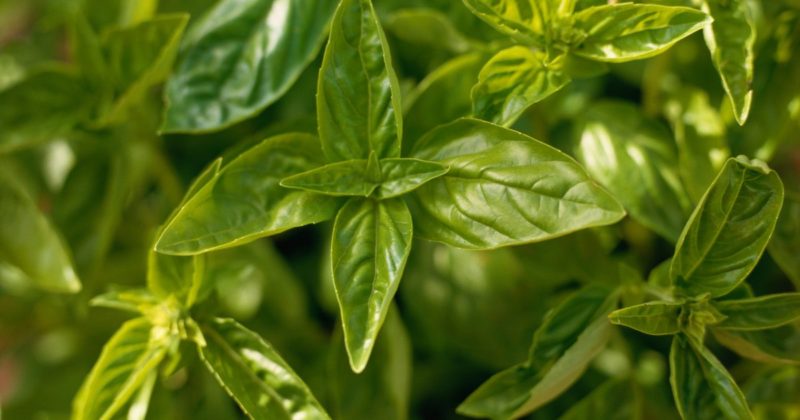
Greens with a menthol scent are added to refreshing tonic drinks, seasonings, and used as a flavoring for vegetable oil.
The Velvet variety has elongated light green leaves (8 cm), grows as a medium-sized bush up to 30 cm in height. The spice is added to tonic and cooling drinks, baked goods, and used for pickling.
Vanilla
Greens with an unusual vanilla aroma are used in the manufacture of baked goods and decorations for confectionery products.
Tall bushes of the Vanilla Aroma variety reach 70 cm. The leaves change color as they develop: young ones are green, ripe ones are purple.
By color
An important characteristic by which plant varieties are divided is color. Basic shades - green And violet. The remaining colors are obtained by crossing varieties.
Reference. Purple basil is rich in anthocyanins, flavonoids with antioxidant, anti-inflammatory and other beneficial properties.
Green
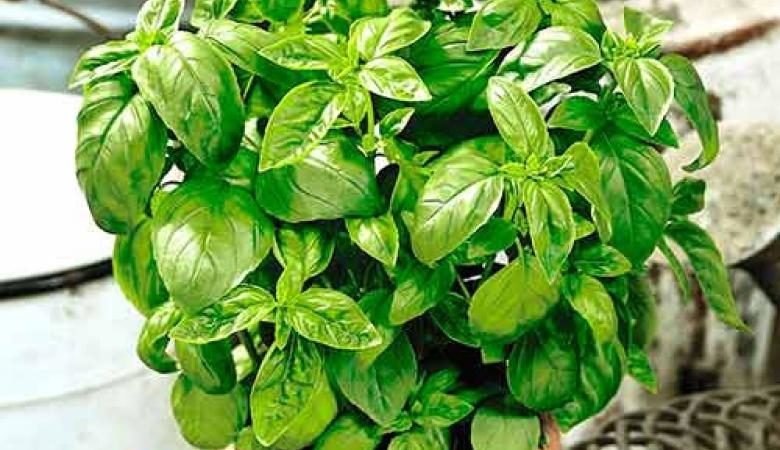
Green basil has a soft and delicate taste without any characteristic pungency or bitterness. It is added to baked goods, dessert decorations, and drinks.
Description of the mid-late variety Zastolny (below in the photo): the leaves are small, bright green, the aroma is very pronounced, reminiscent of allspice. The crop grows as a small bush 40–50 cm high.
Violet
The taste of purple basil is sharper than that of green, pungent, with a pronounced pungent aroma. Greens are added to hot seasonings, sauces and marinades for meat and fish dishes.
Description of varieties:
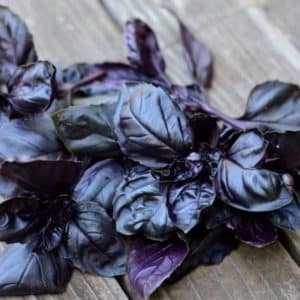
- Charm - fragrant basil with large purple leaves and pink flowers. Anise-pepper aroma.
- Granada: Leaves are deep red-violet with a purple tint. Valued for its high yield (3.5 kg/m²) and ease of care.The pleasant aroma remains in dried form.
- Crimean It grows as a tall bush up to 70 cm high. The purple leaves are ovoid in shape with jagged edges and reach a length of 6–8 cm. The rich cinnamon aroma remains dry and fresh. Greens are suitable for conveyor growing throughout the summer.
By shape
Depending on the shape of the leaves, basil can be small-leaved, large-leaved, bunched or spoon-shaped.
small-leaved
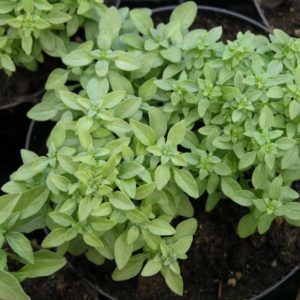
Plants with small leaves are used to prepare fresh dietary salads. They do not need to be chopped, just pick them from the bush and add them to the dish.
The Spring Mood variety has small, light green, slightly bubbly leaves. The aroma is pronounced peppery. According to reviews, the spring mood loves a lot of light and warmth.
Spoon-shaped
Spoon-shaped, or lettuce-leaved, varieties are named for the unusual concave shape of the leaves in the shape of a spoon.
Spoon basil - small dwarf bush spherical in shape, up to 15–20 cm tall, leaves are small, light green. The plant emits the aroma of cloves and bay leaves. It is used mainly for preparing fresh salads and winter preparations.
The variety is grown both at home and in garden plots.
Large
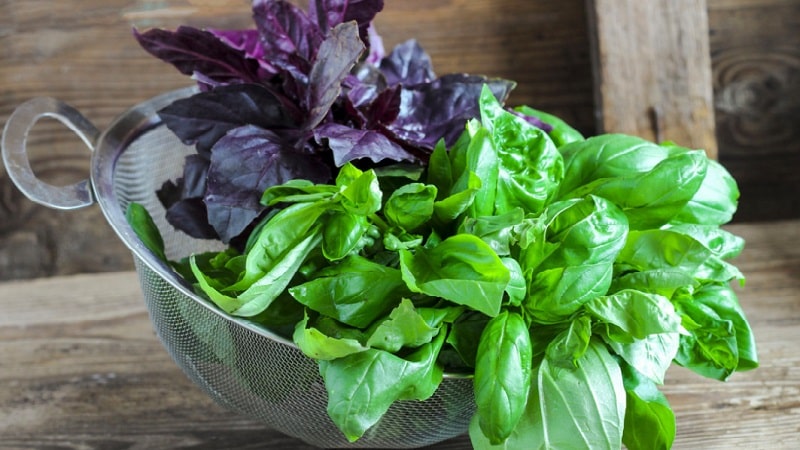
The bushes grow with very large leaves - up to 7–10 cm in length. These are usually tall varieties, so they are rarely grown at home. Greens are used in fresh or dry ground form for canning for the winter, in seasoning for making marinade.
The Mauritanian variety has large leaves with a purplish-violet tint and jagged edges. Bush basil is tall - reaches 65–70 cm. The vegetative period is 60–65 days.
Puchkova
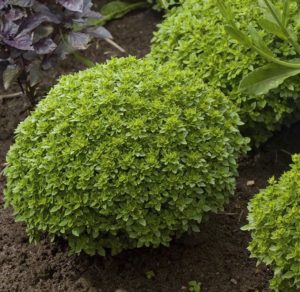
This crop is often grown in a pot on a windowsill.Compact, low-growing, spherical bushes produce crops throughout the year.
The Osmin variety grows as a small compact bush up to 15–20 cm high. The leaves are purple with small jagged edges.
Basil is suitable for growing on a windowsill or insulated balcony, and is used to decorate the garden as a border plant. It is added to salads as a spice.
Conclusion
Types and varieties of basil differ in the color and shape of the leaves, the height of the bush, delicate or sharp aroma with unusual notes from pepper to vanilla.
Knowing the differences, it is easy to choose a plant that is suitable for preparing the first or second course, dessert or drink.